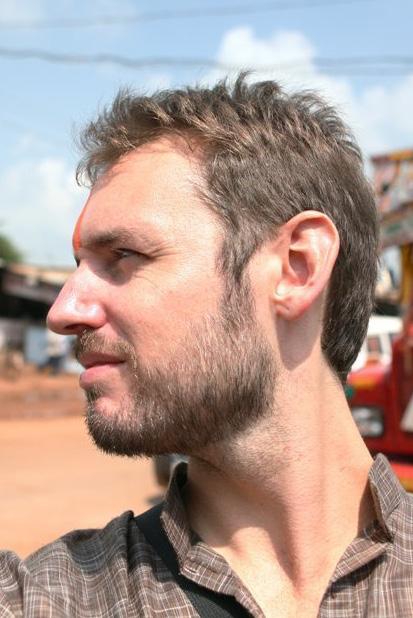
3 minute read
hot in India
from 2012-01 Sydney (1)
by Indian Link
My niece, an avid reader, introduced me to the best-selling author Amish Tripathi on my recent visit to India. Amish has written a rather Dan Brown-ish fictionalised story of Lord Shiva, titled Immortals of Meluha - the first in a trilogy. It was first published in 2010, and had already sold 175,000 copies by August 2011; when the second book in the trilogy, The Secret of the Nagas was released recently, 80,000 of the 100,000 copies that were printed were pre-ordered, and the second edition of the book was in print even before its first edition had been released in August! That should give the readers an idea of the magnitude of popularity of Amish’s books in India. These are figures for which any Australian author would give their writing hand!

The novel Meluha is quite a page-turner and moves at a brisk pace, spinning the tale about the morphing of Shiva from ‘just a man’ 4000 years ago to the Mahadev of today. It is almost believable, with Shiva making the big trek with his tribe from the Mansarovar – in the shadow of Mount
On a routine visit to some local bookshops in Bangalore and Chennai, I stumbled upon a rather brilliant - and strangely unsettling - book. It is by an American freelance journalist Scott Carney, who had been a reporter in Chennai between 2006–2009. His first book, The Red Market: On the trail of the world’s organ brokers, bone thieves, blood farmers and child traffickers was published in June 2011 by William Morrow/Harper Collins, and is being critically acclaimed. He has coined the phrase “The Red Market” to describe a broad category of economic transactions around the human body. The book traces the multibillion-dollar underground trade in body parts and tissues through history, from early medical study and modern universities to poverty-ravaged Eurasian villages and high-tech Western labs; from body snatchers and surrogate mothers to skeleton dealers - and the poor who sell body parts to survive. What is particularly interesting, and alarming, for our readers is that Carney draws widely on his experience reporting from India, and it is deeply unsettling to read about a poor suburb in outer Chennai which is dubbed ‘Kidneypuram’ on account of the large number of the people there who have sold their kidneys; a ‘baby factory’ in Gujarat where women ‘rent out’ wombs for making babies to rich women in the first world,
Douglas M Knight’s recently released biography Balasaraswati: Her Art and Life , of the doyen of the Bharatanatyam dance scene in the twentieth century, is a brilliant and inspired account of this trailblazing artiste. Knight is married to Balasaraswati’s daughter, which gave him almost unlimited access to a whole range of private documents and letters - and must have opened several doors which allowed him to interview a wide cross-section of her contemporaries. What is most telling about the book is the tension - if not a cold warthat existed for most of Balasaraswati’s life between her and Rukmini Arundale. The former, from a hereditary Devadasi family, refused to sanitise Bharatanatyam of its traditional sensuality, while the latter worked hard to purge it of its sensual elements in an effort to make it ‘respectable’ and acceptable to middle class audiences. While MS Subbulakshmi, who hailed from a similar background to Balasaraswati, opted for respectability by
Kailash – to the Indus Valley, where there is a already a flourishing and advanced civilization which looks up to him as the messiah Neelkanth.
Amish, from Mumbai, completed his management degree and worked in the financial services industry for nearly 14 years before turning to writing. He once wanted to be a historian, but studied management to earn a living. Ironically, he has realized his ambition, albeit through fiction!
The novel Meluha is quite a page-turner and moves at a brisk pace, spinning the tale about the morphing of Shiva from ‘just a man’, 4000 years ago to the Mahadev of today and such like. While local and international law enforcement have cracked down on the market, advances in science have only increased the demand for human tissue ligaments, kidneys and rented space in women’s wombs - so rapid has been the growth in this ‘flesh’ trade that neither the law nor ethicists have had time to weigh up the ethical dilemmas inherent in it.

Carney argues that commerce in body parts cannot be treated as in other materials because bodies are not merely commodities: it creates a lifelong debt and bond between the provider and receiver of the flesh. He calls for “radical transparency” in the red market supply chain in order to protect its humanity.

Carney contributes stories on a variety of medical, technological and ethical issues to Wired Magazine and others, as well as to the National Public Radio.

Carney argues that commerce in body parts cannot be treated as in other materials because bodies are not merely commodities: it creates a lifelong debt and bond between the provider and receiver of the flesh marrying Sadasivam, Balasaraswati chose not to whitewash her past. This book pays homage to her courage.
Balasaraswati refused to sanitise Bharatanatyam of its traditional sensuality, while Rukmini Arundale worked hard to purge it of its sensual elements in an effort to make it ‘respectable’











